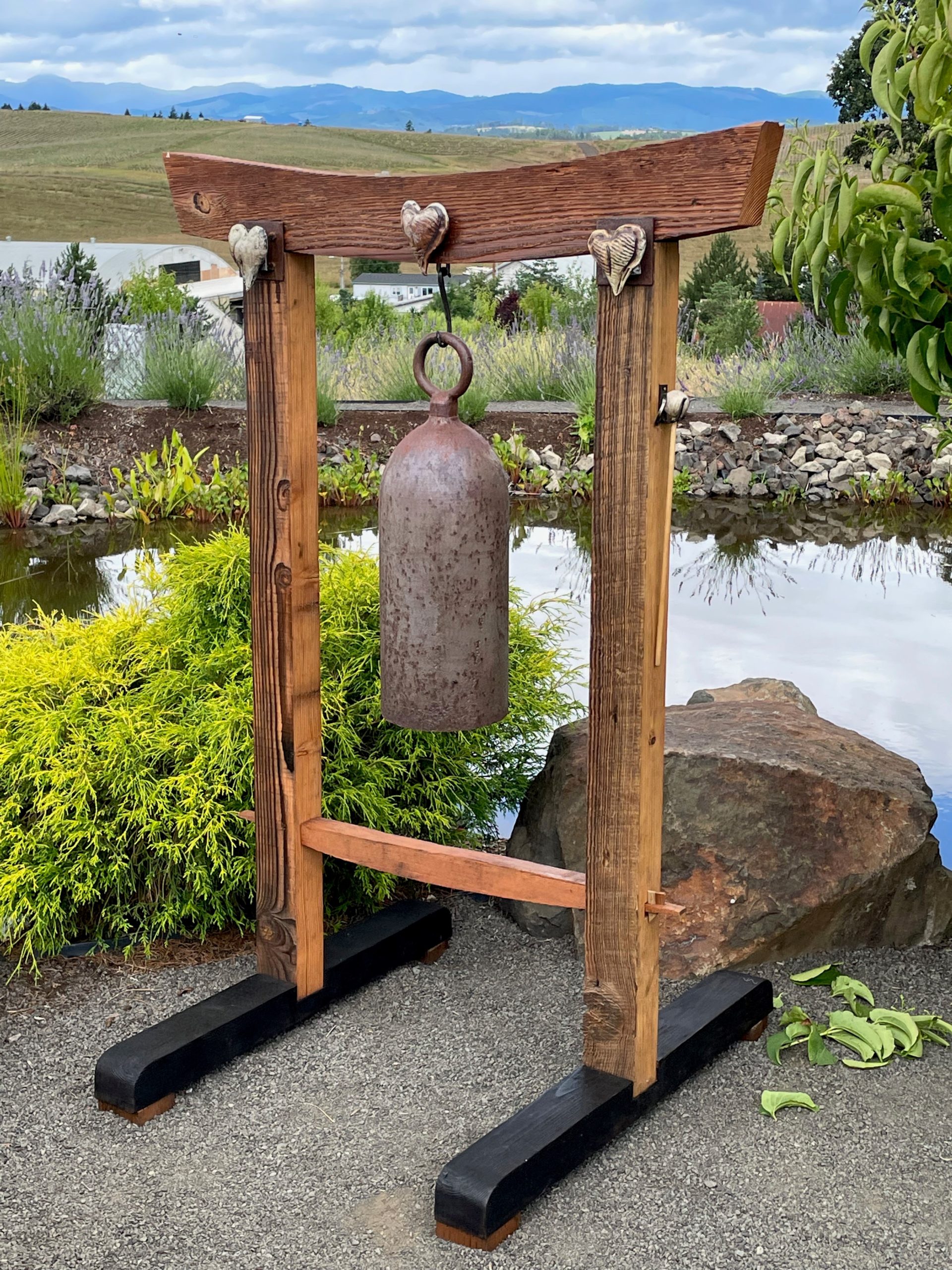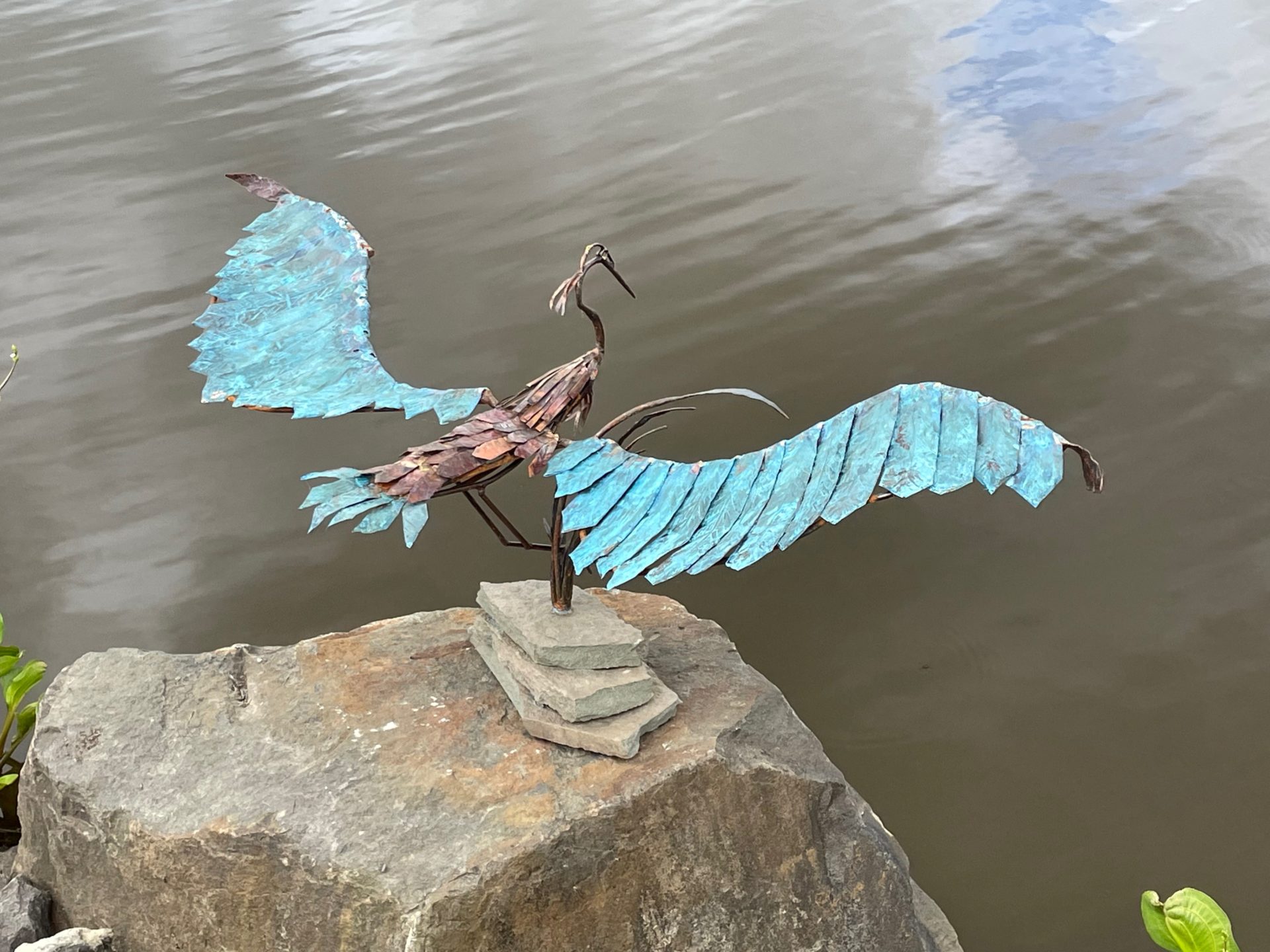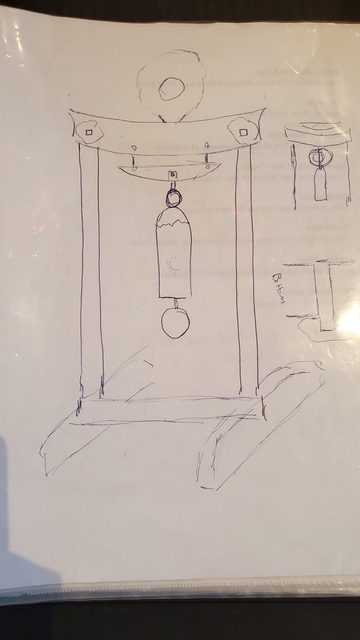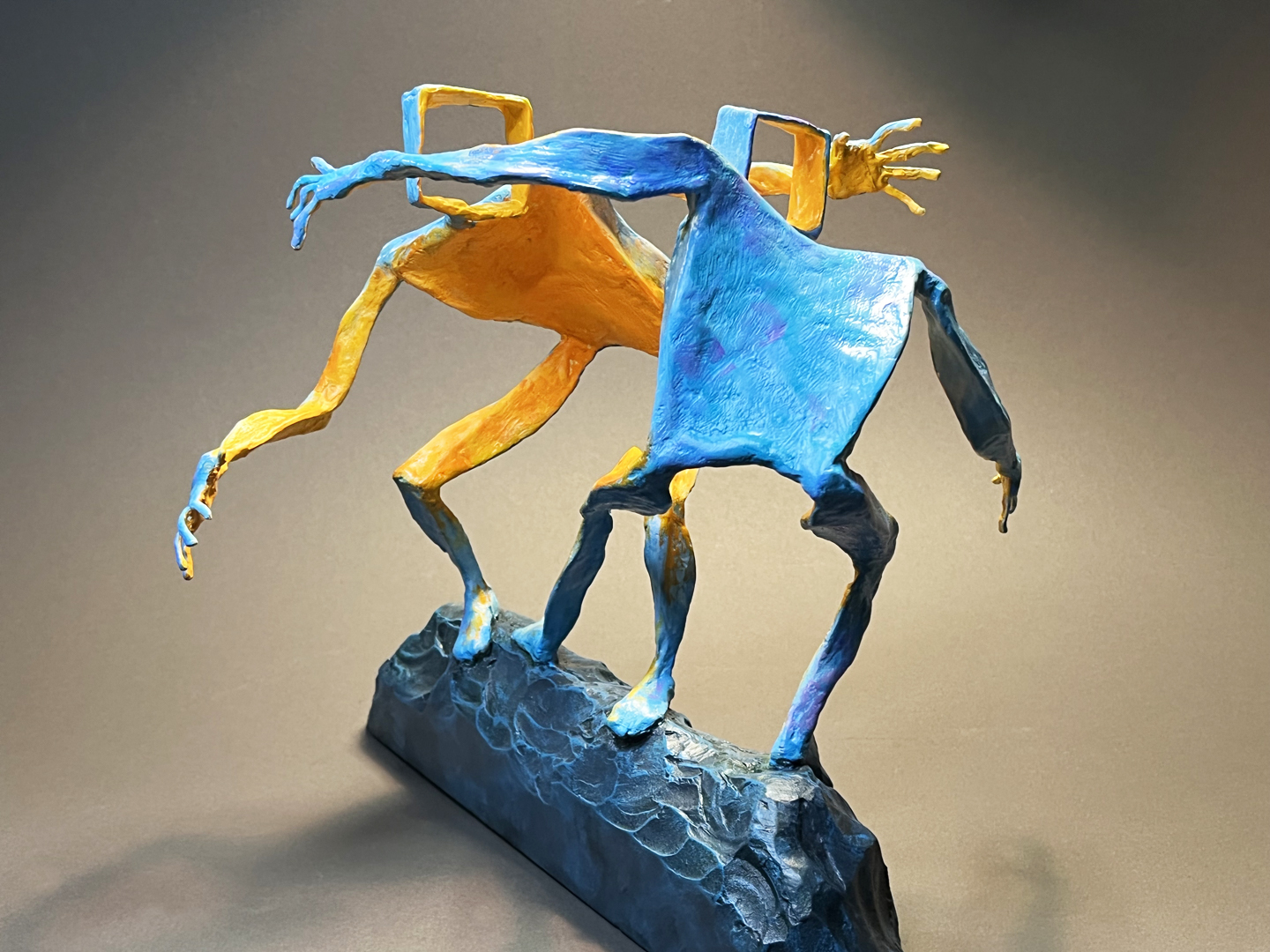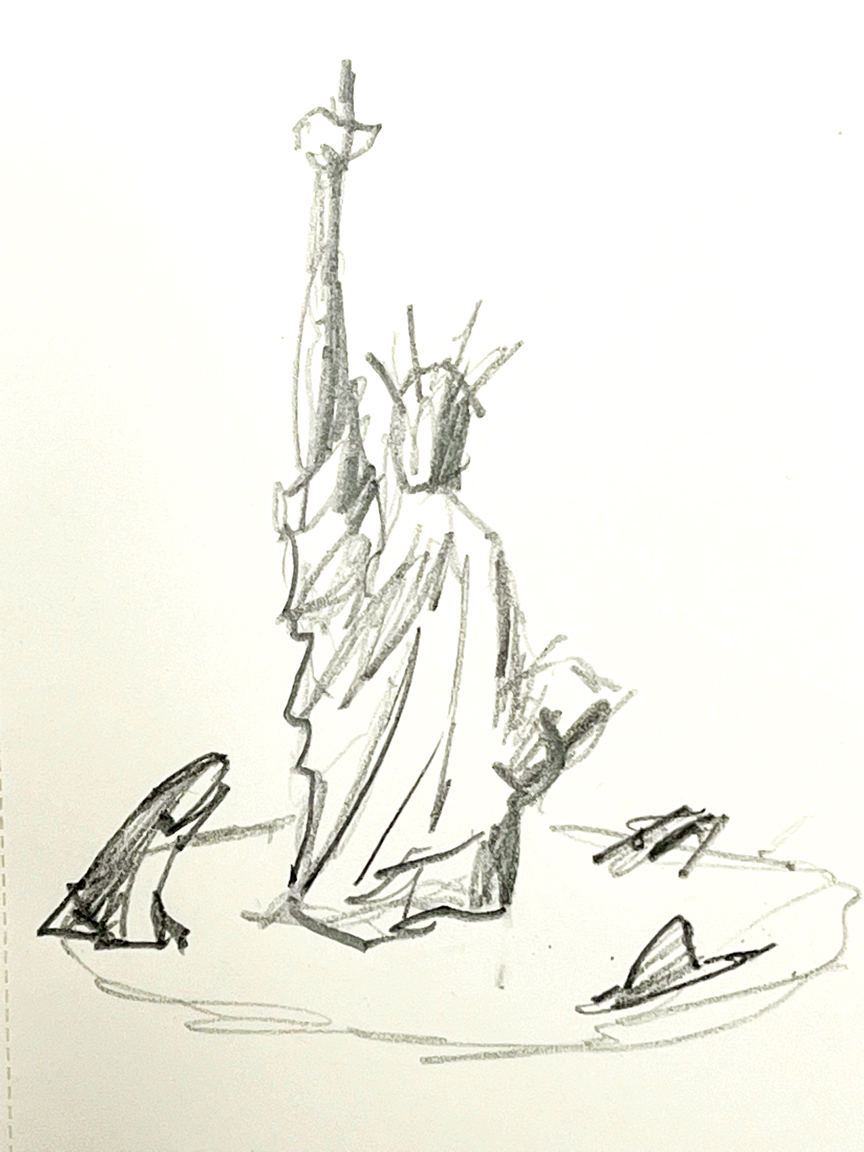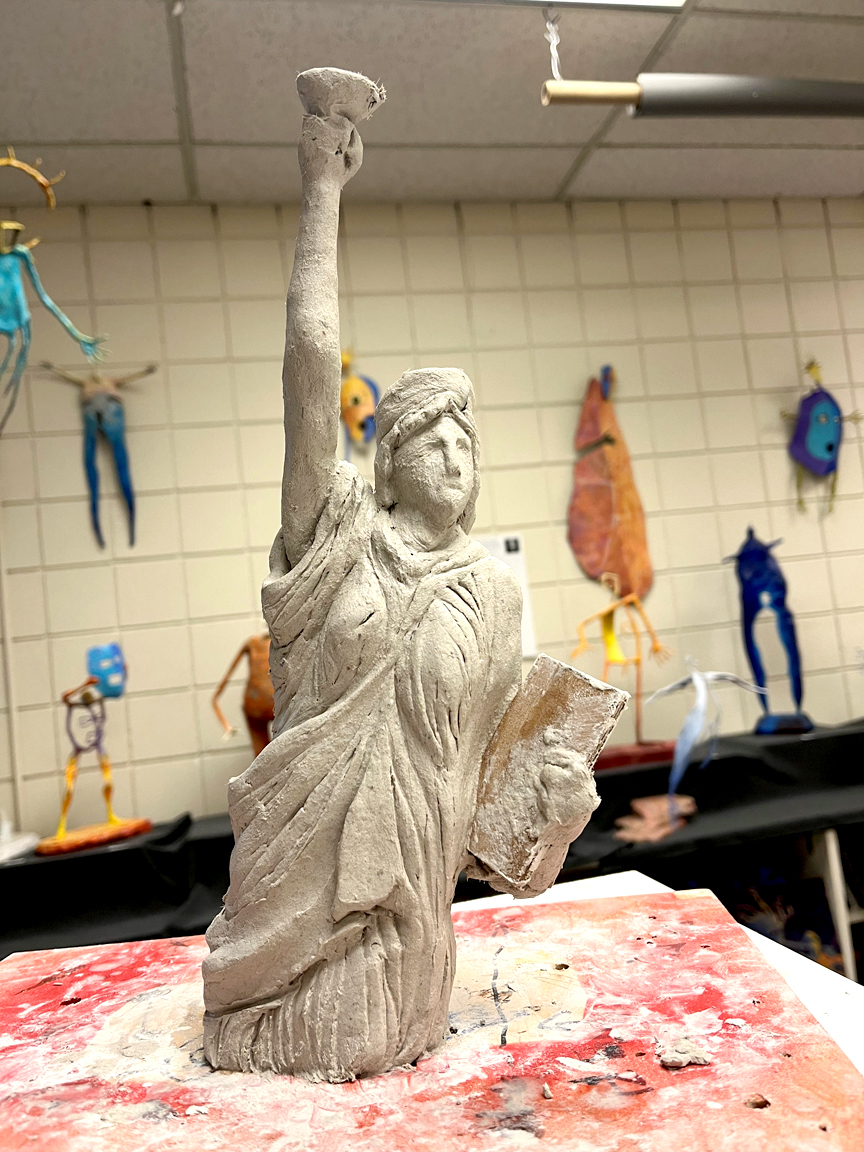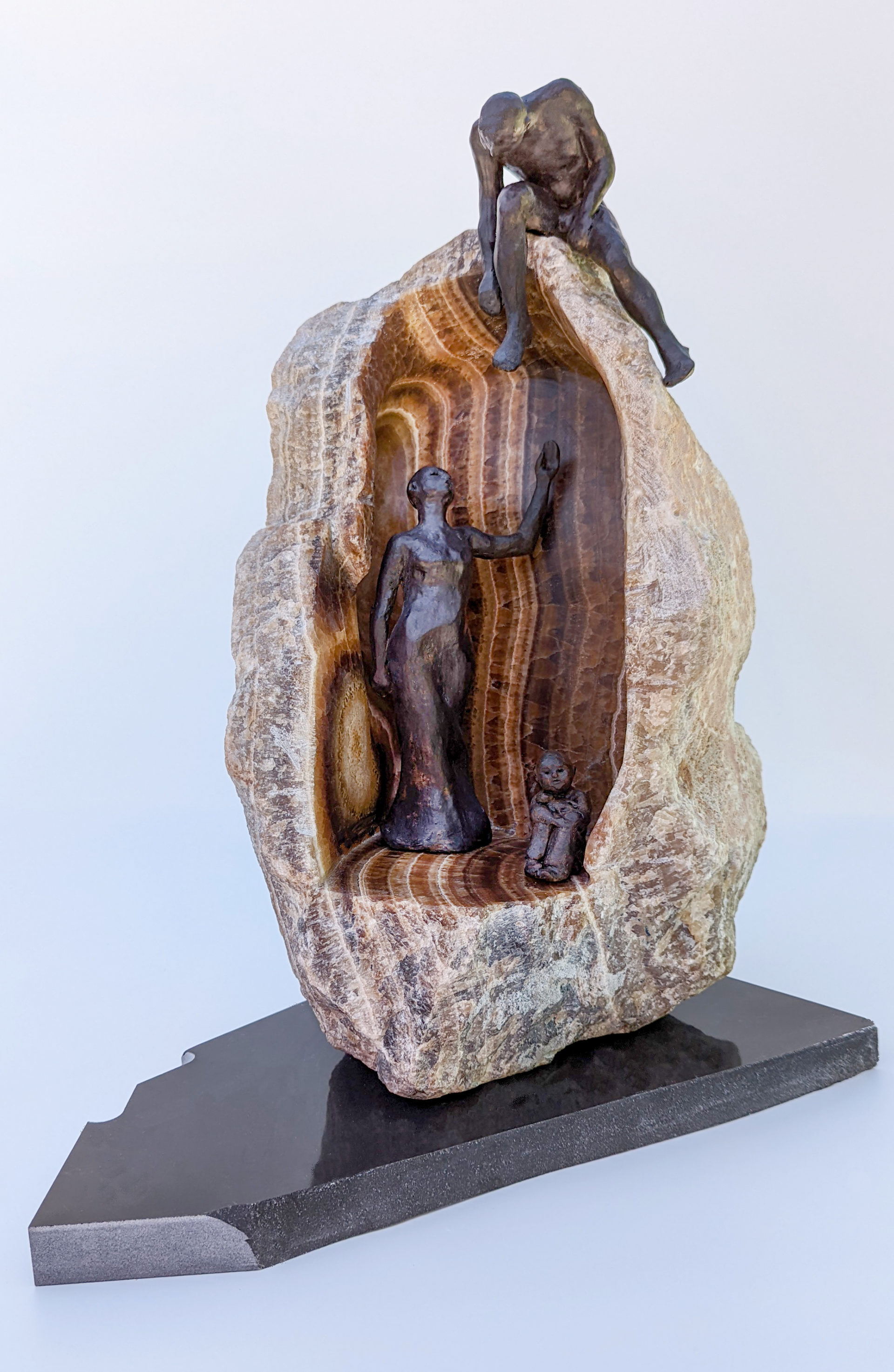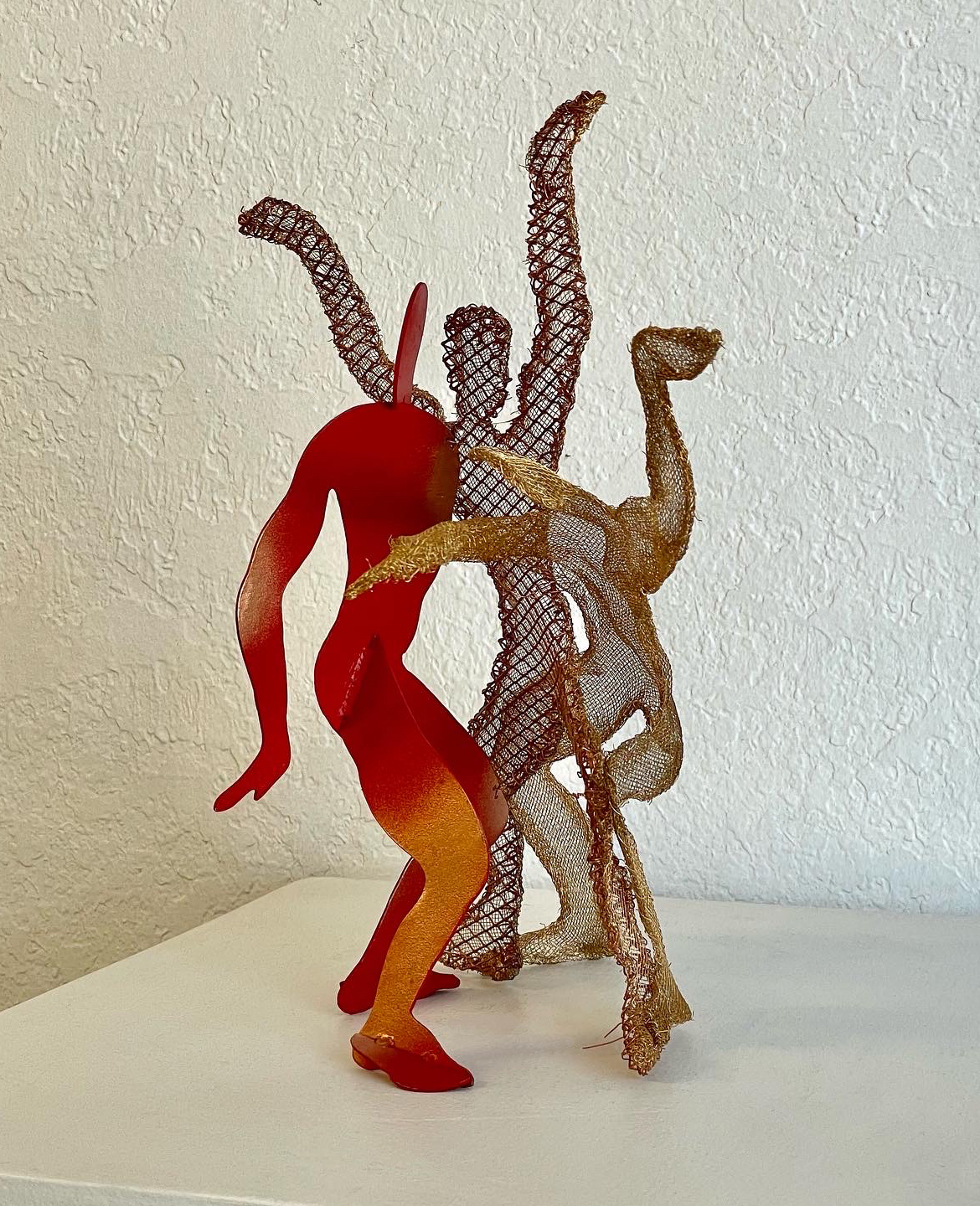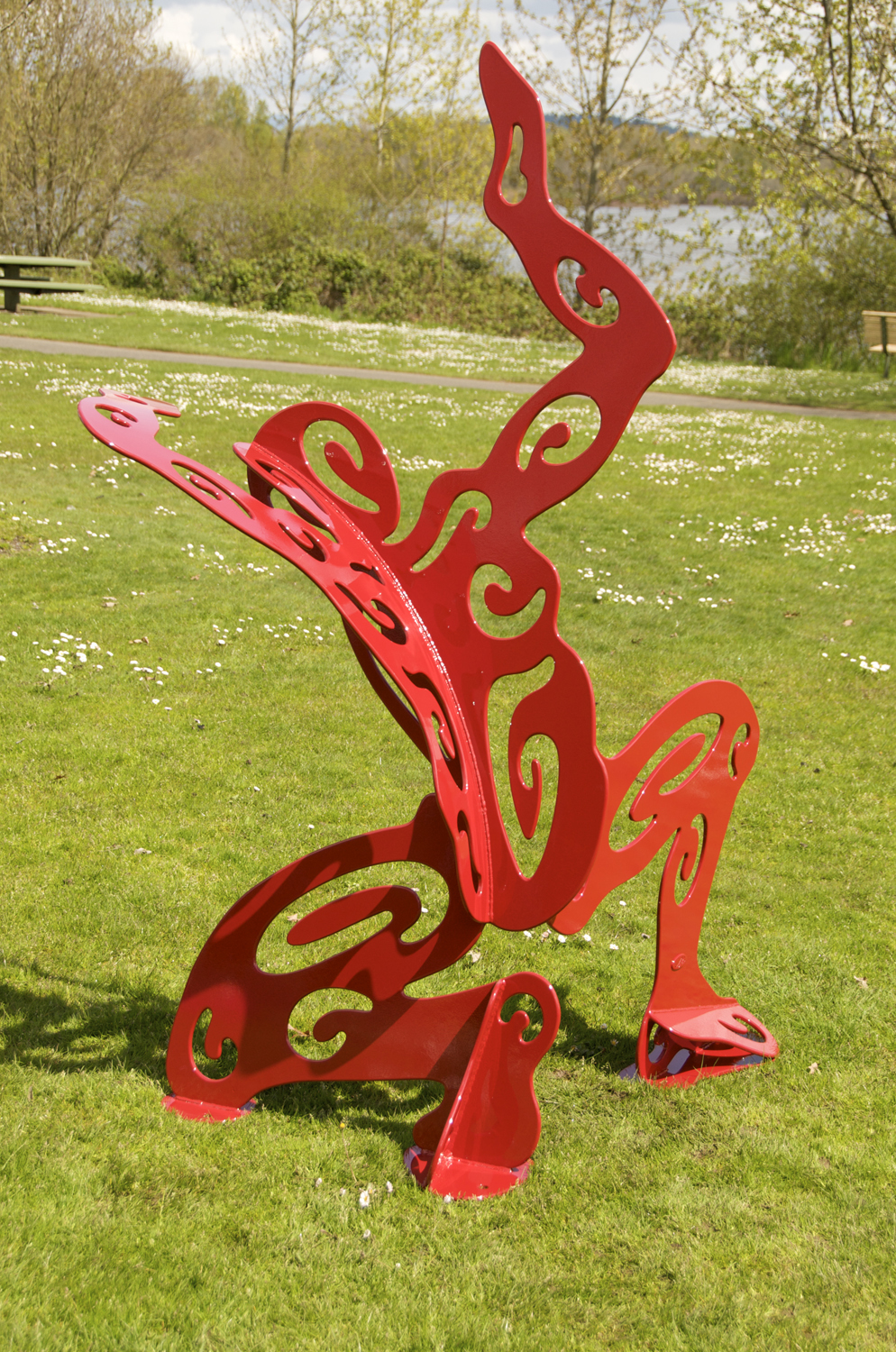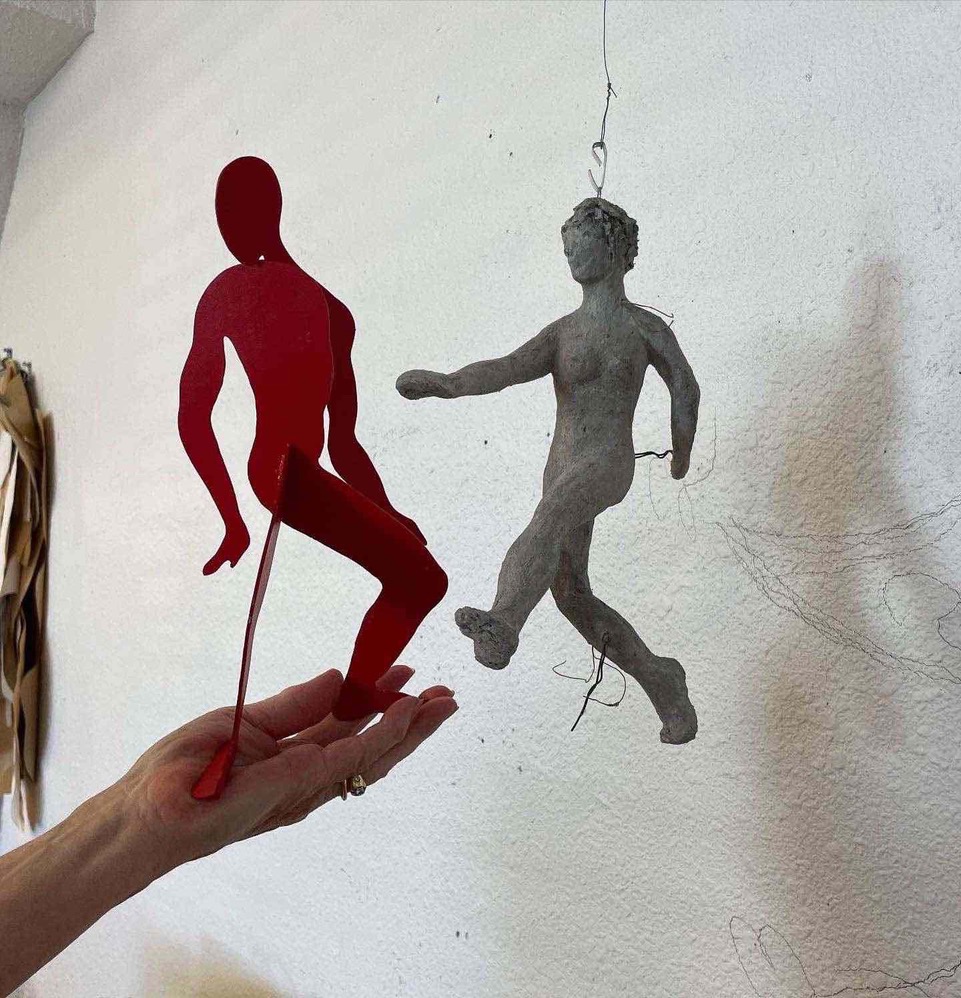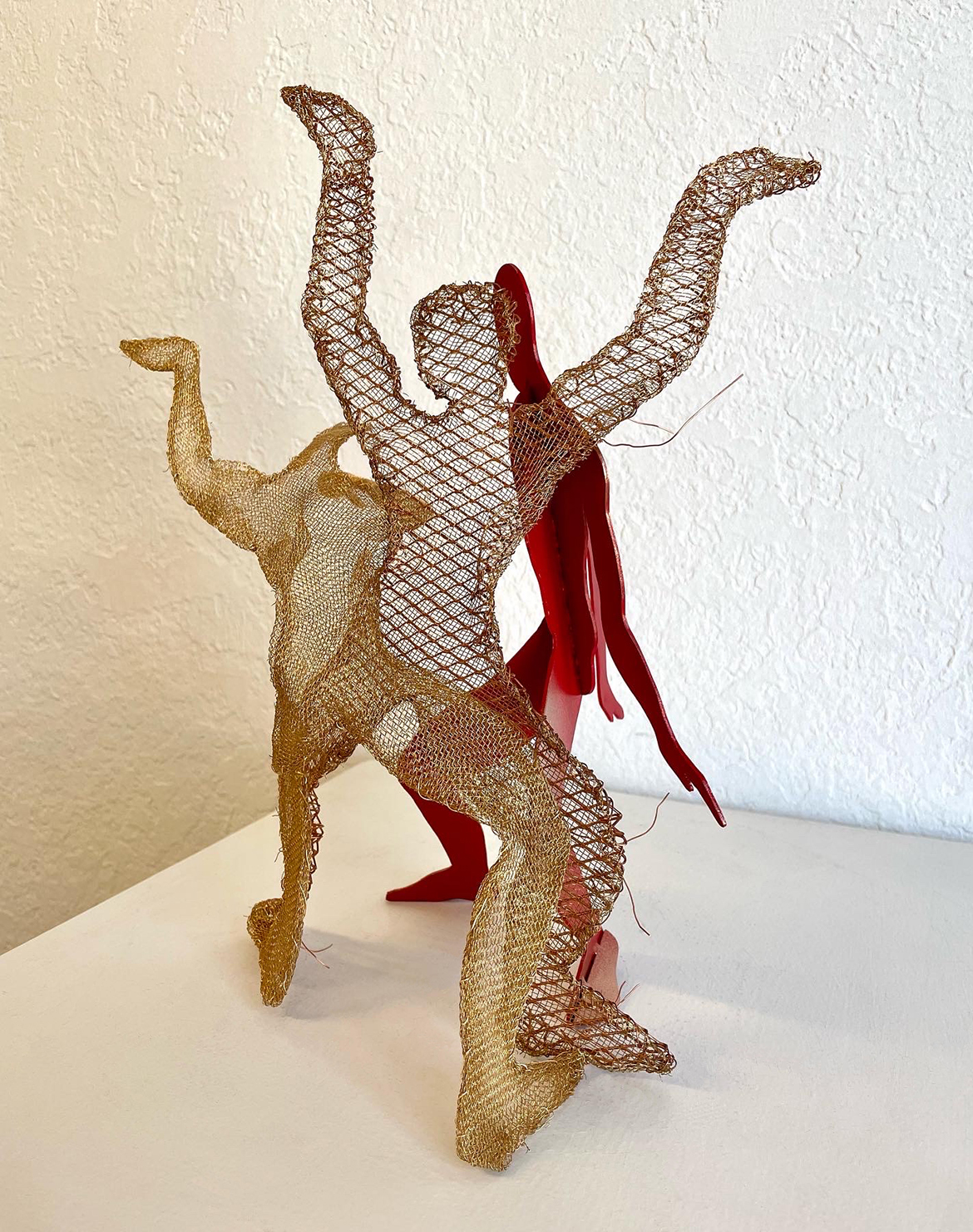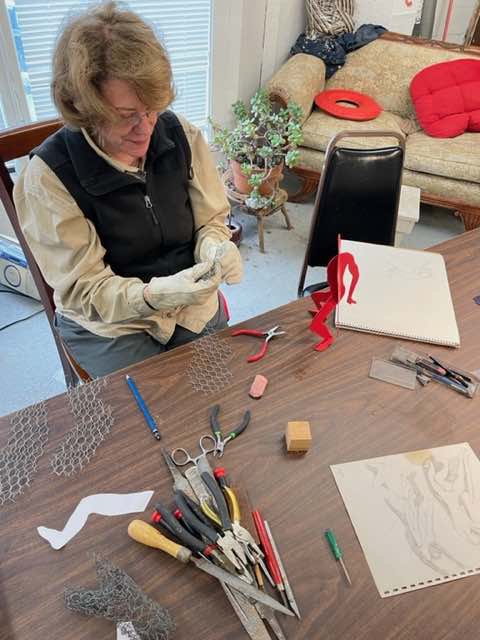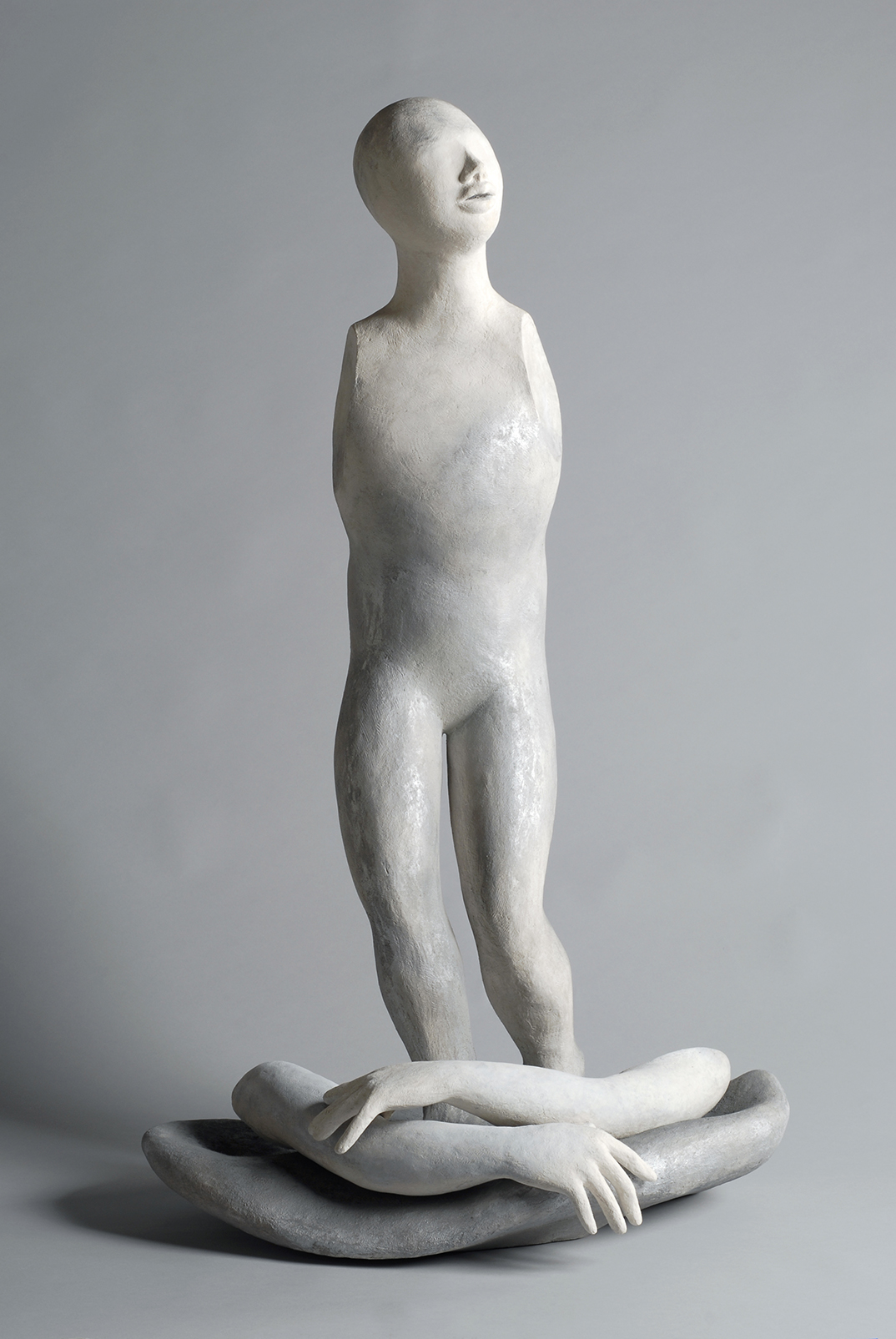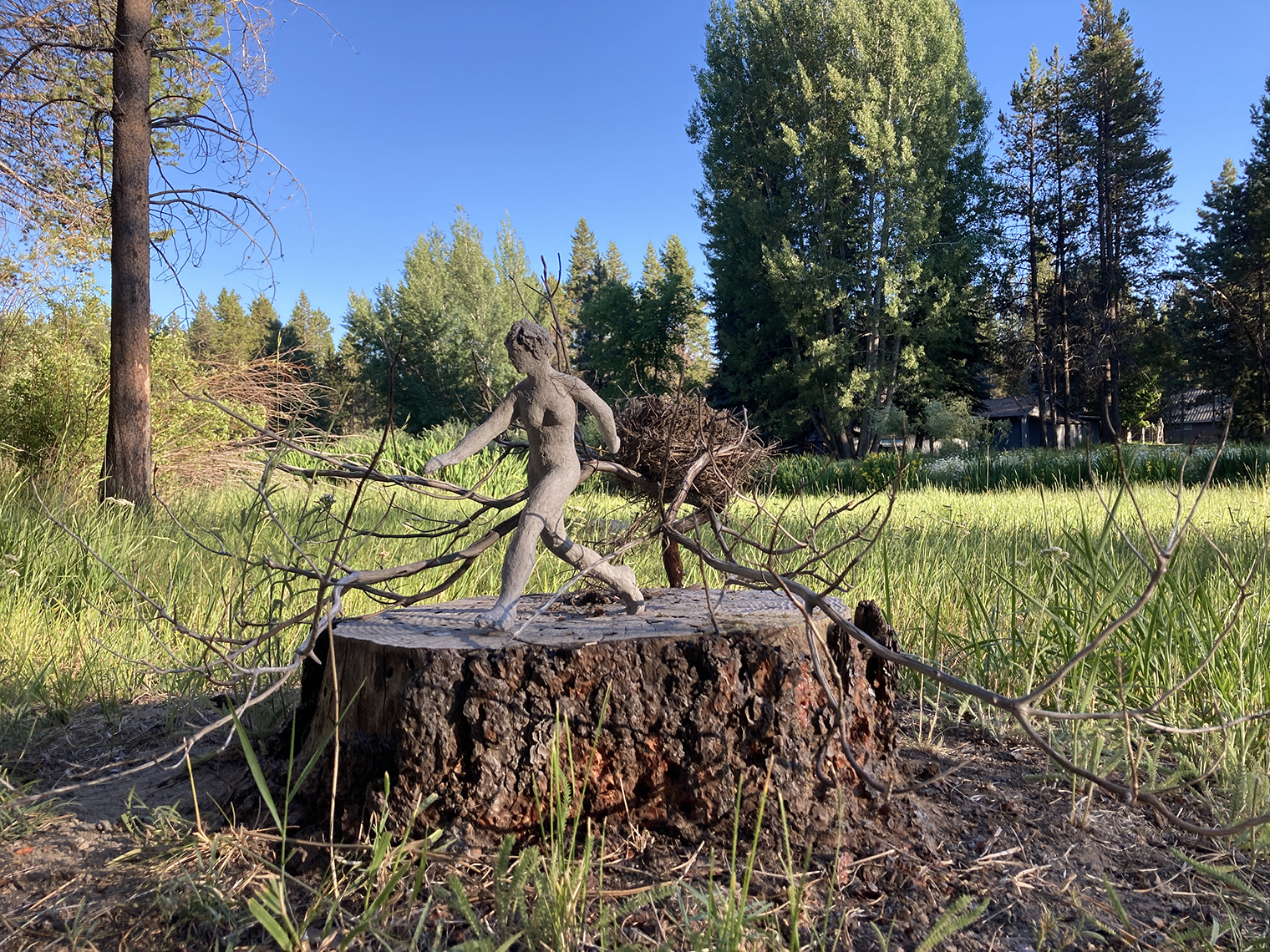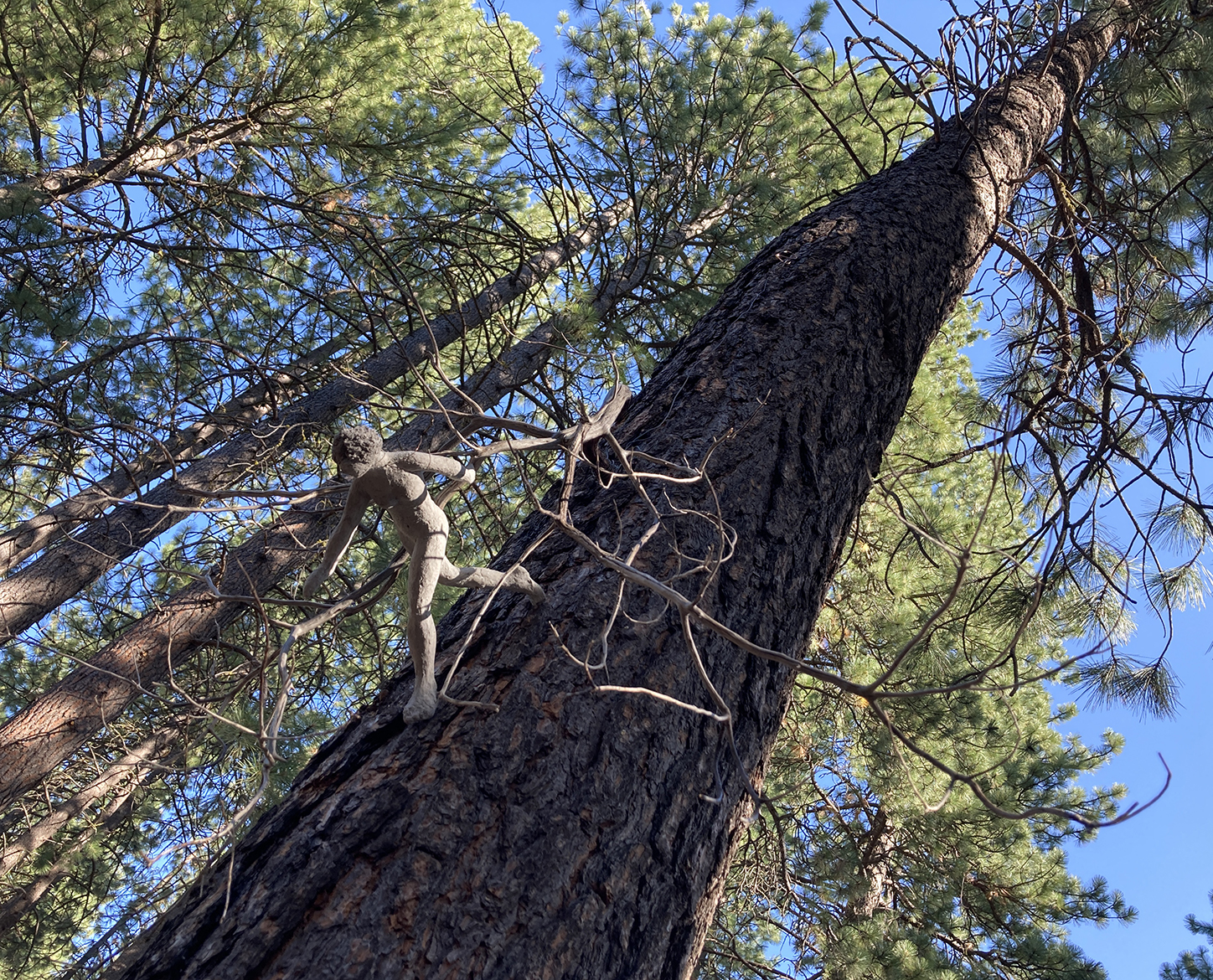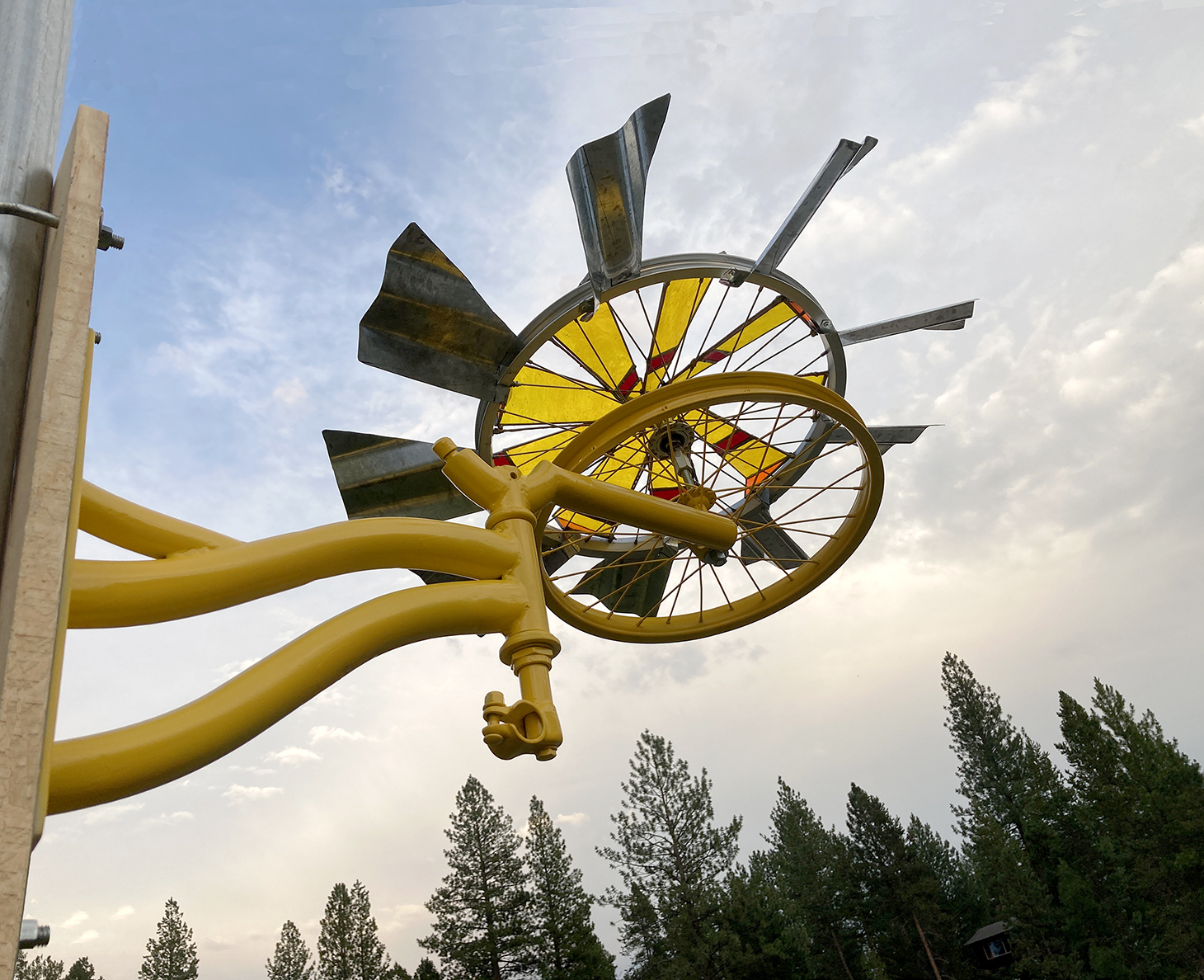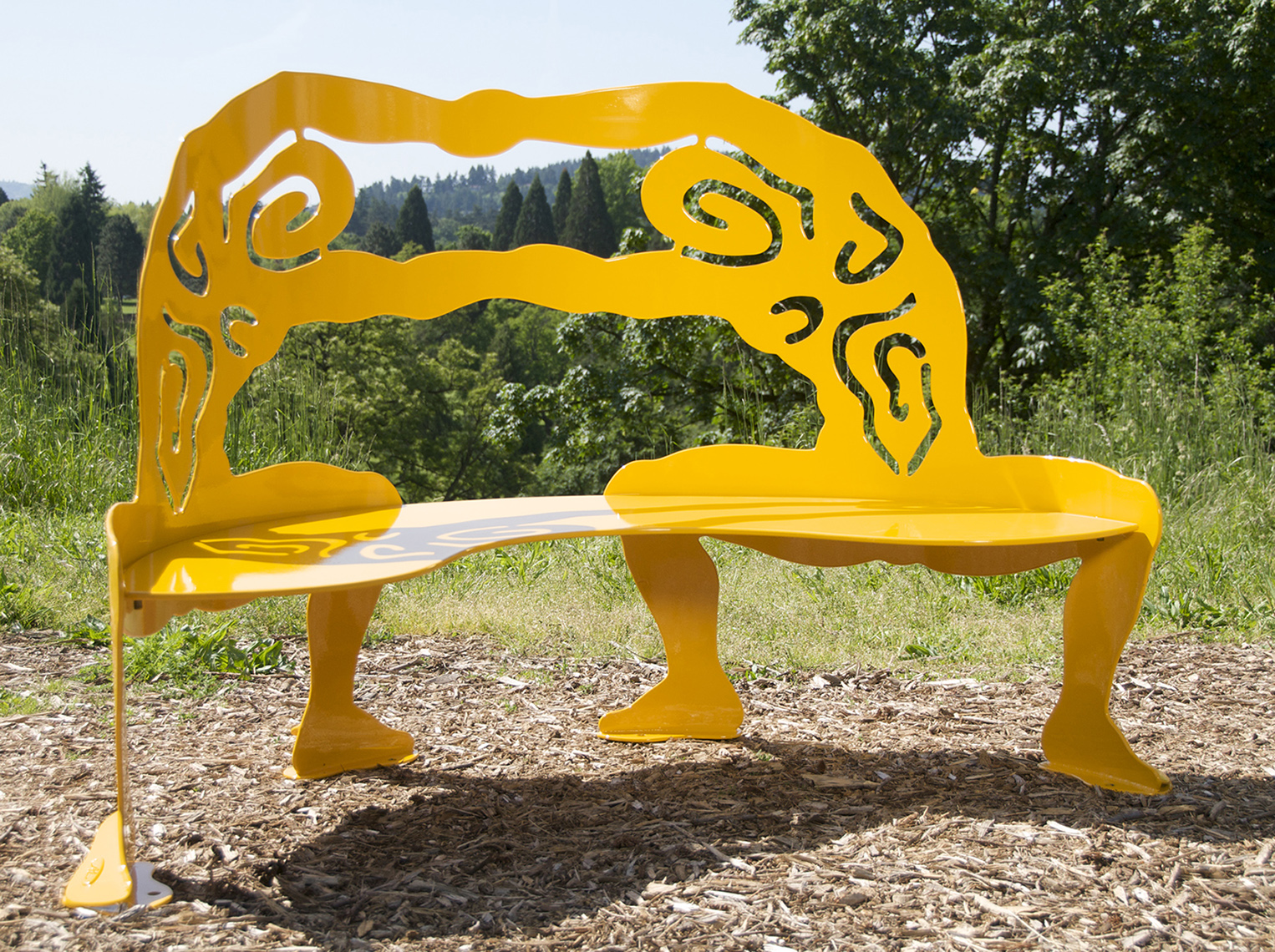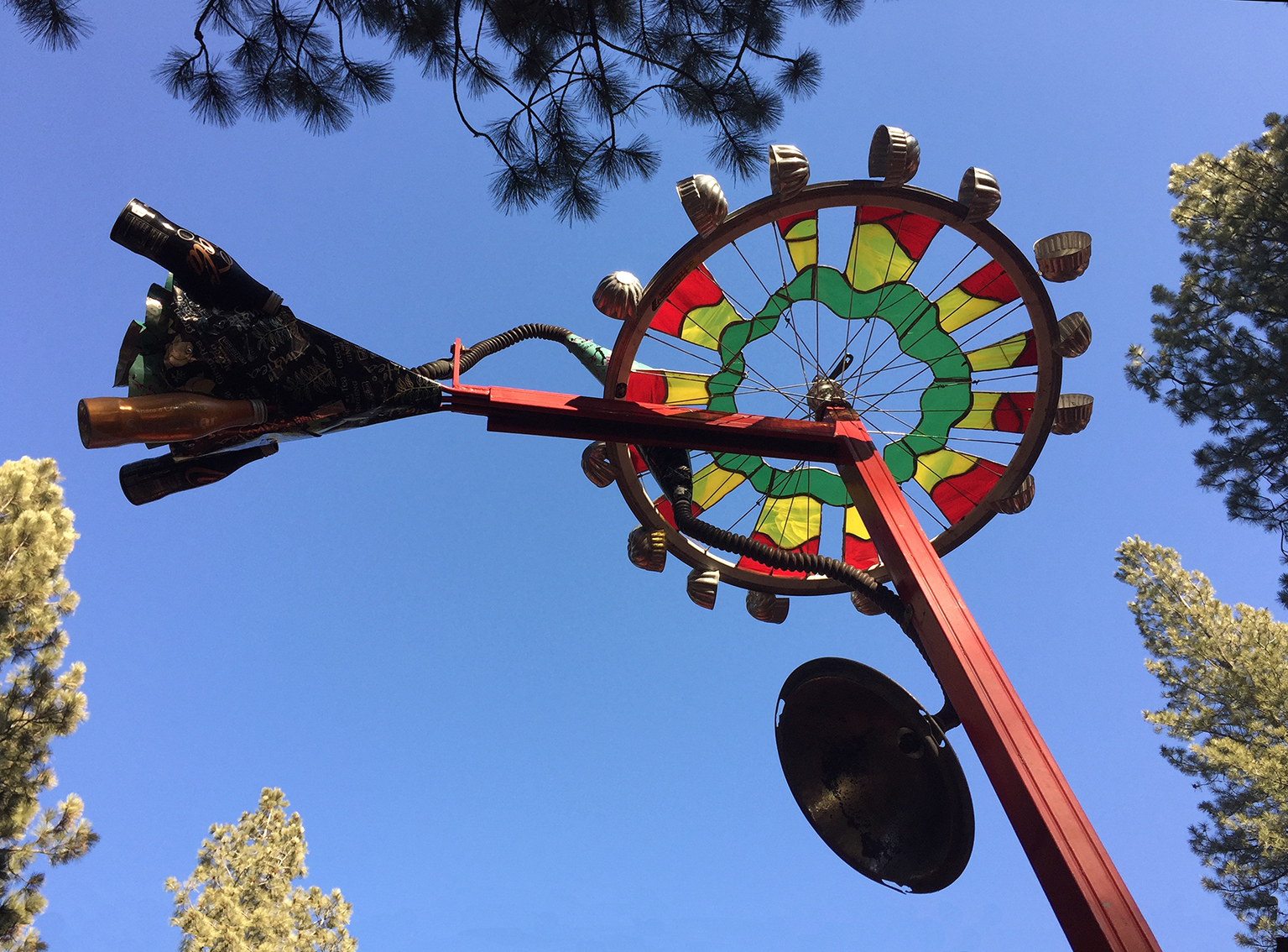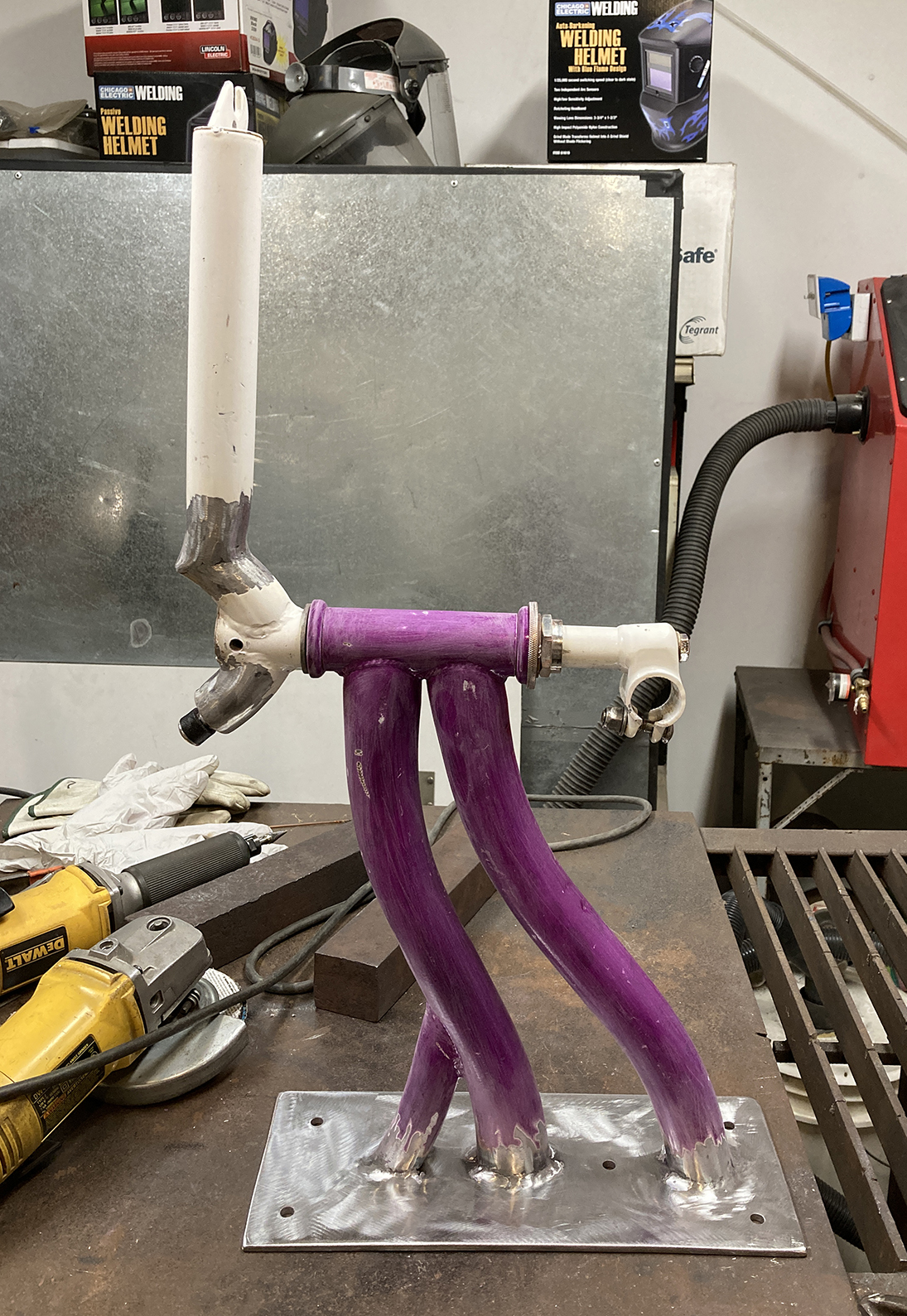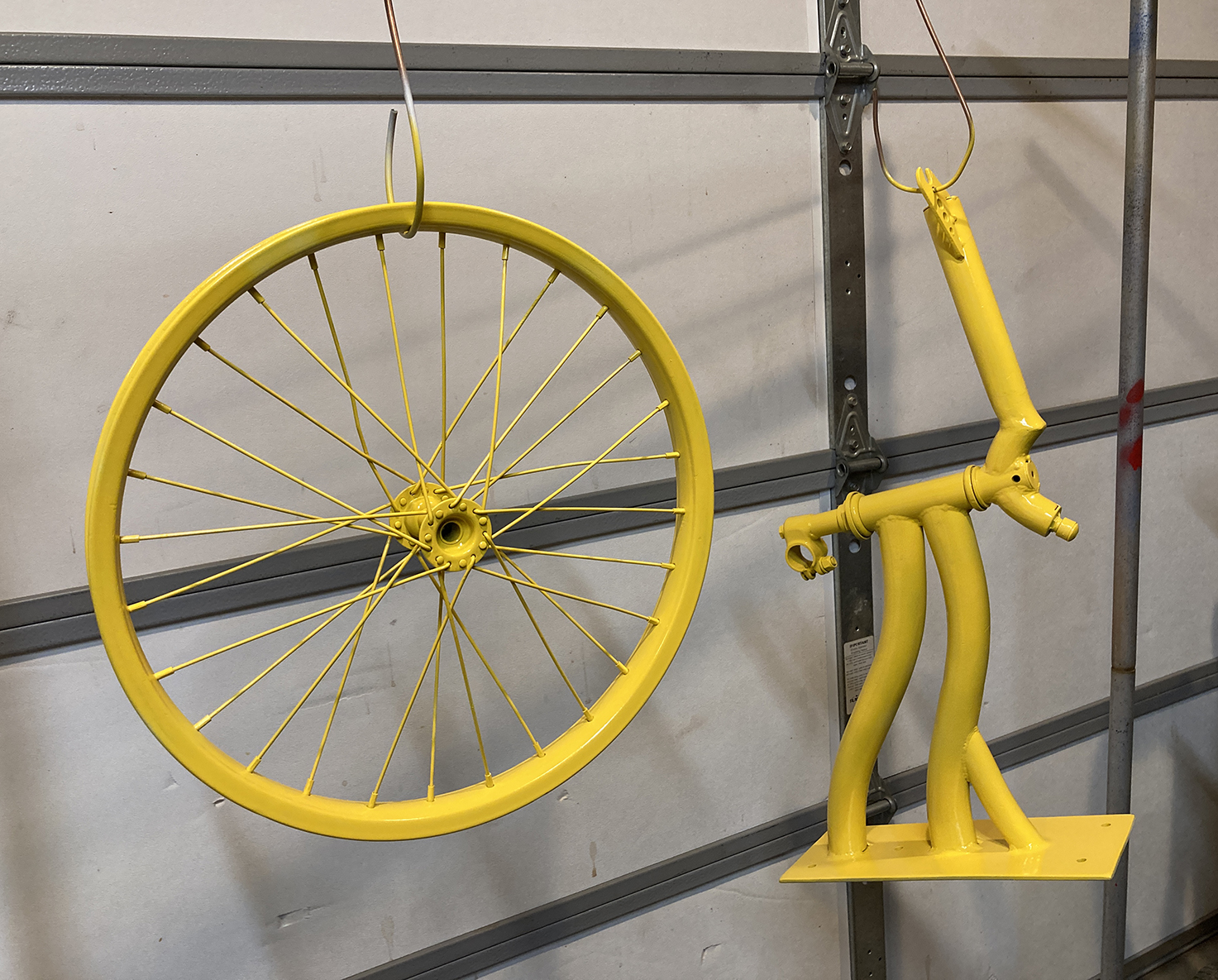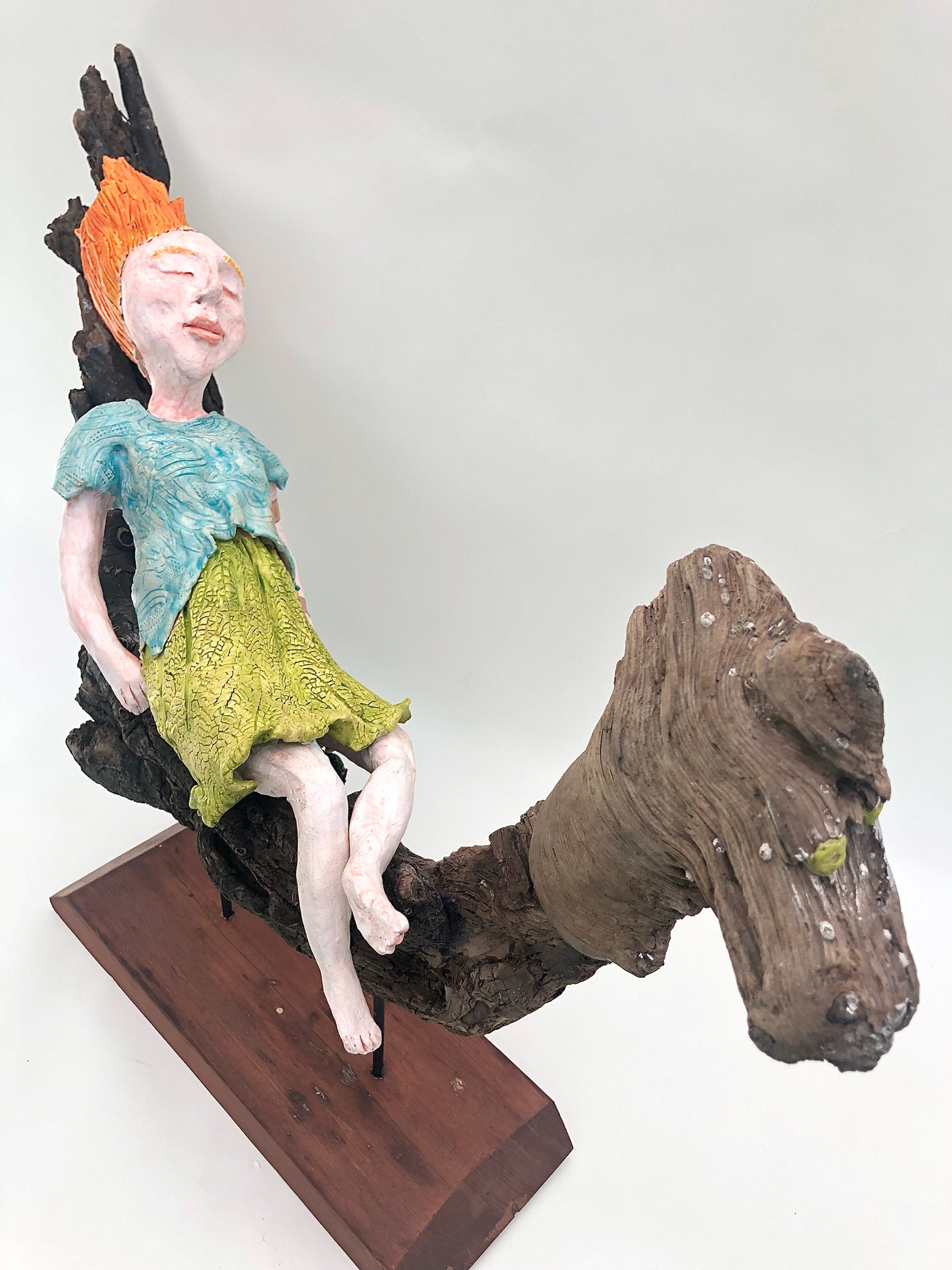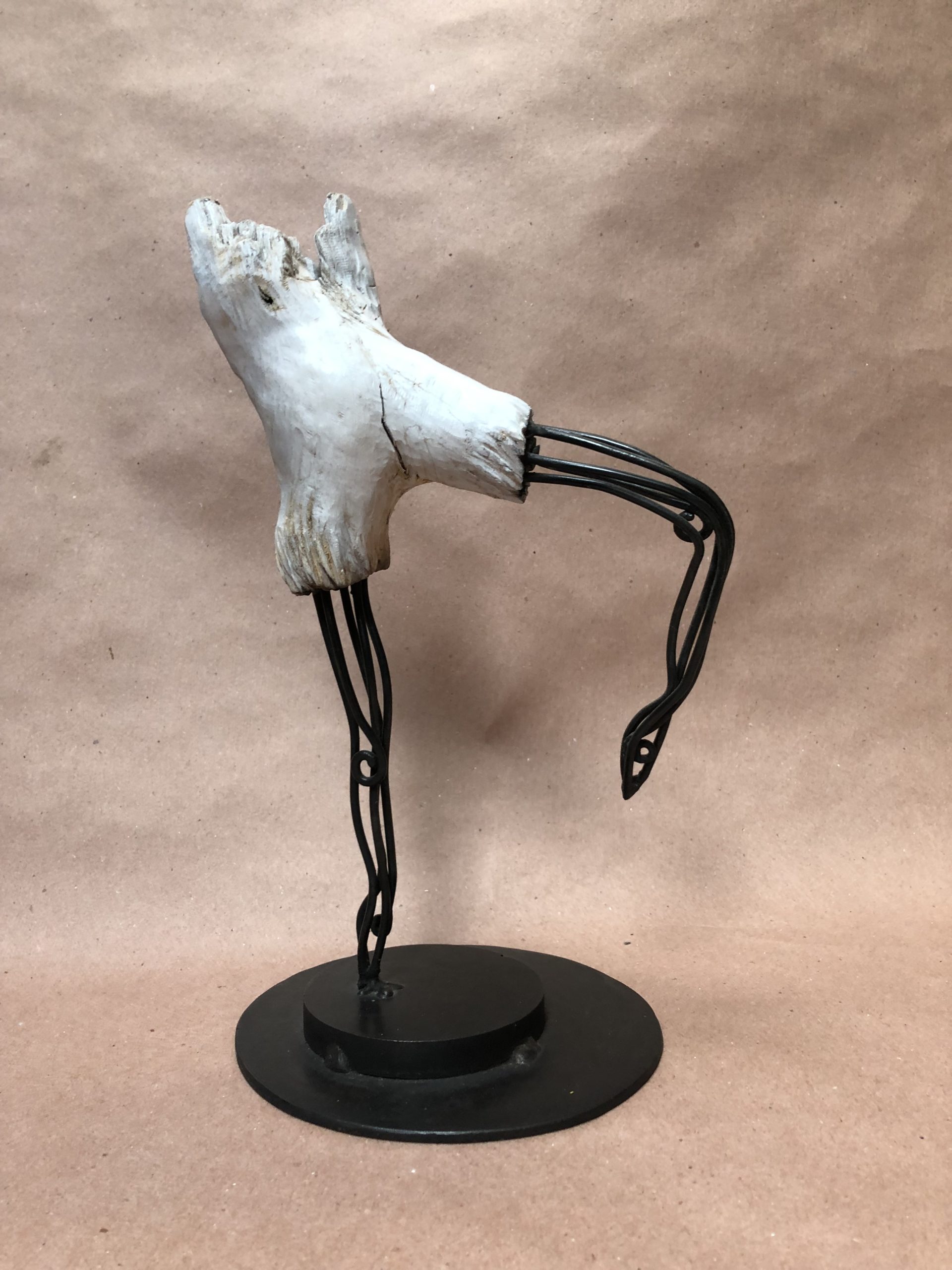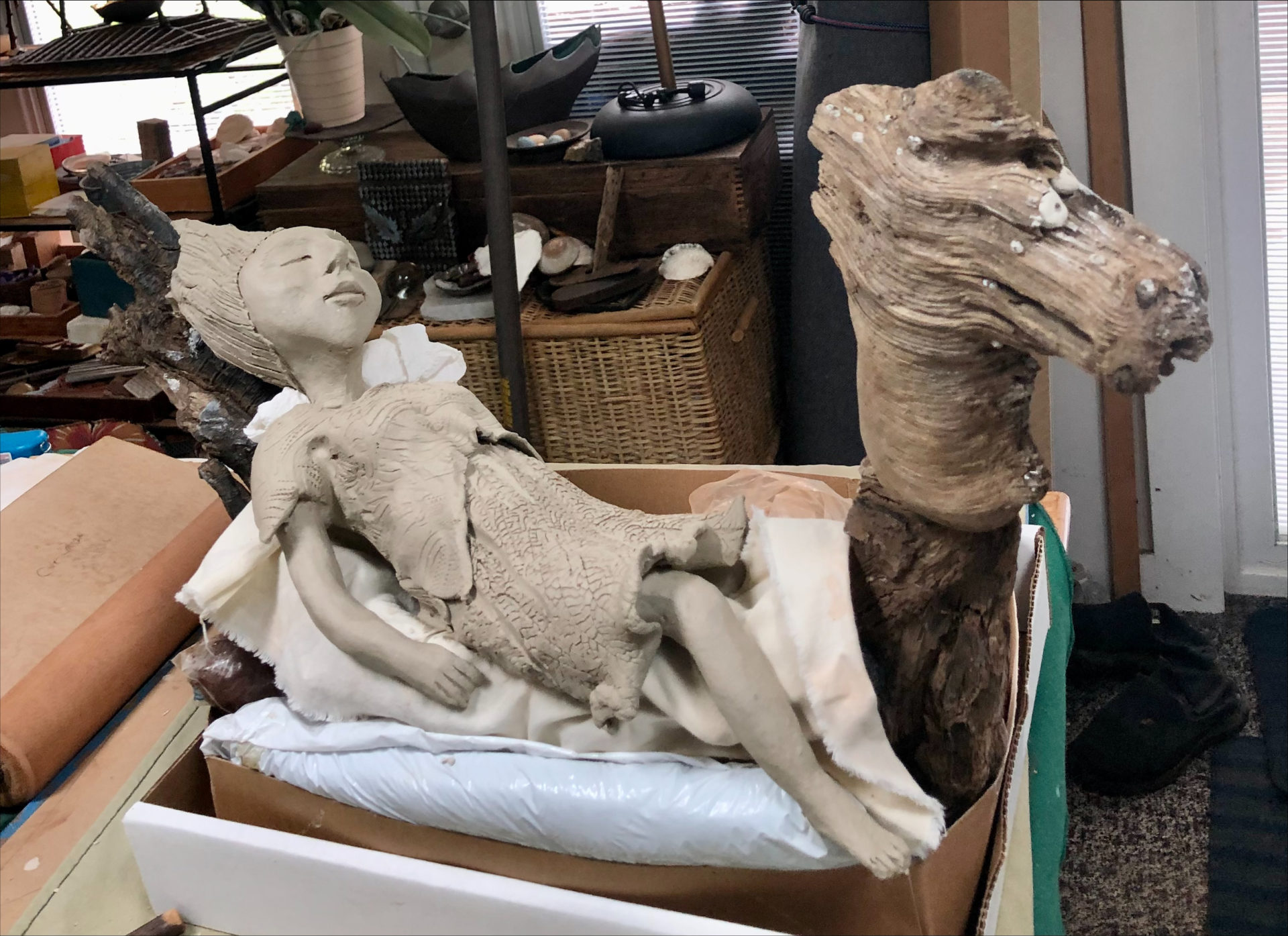A Pacific Northwest Sculptors Online Exhibit
Sept 1 – Oct 30, 2022
Similar in theme to “Unmatched Pairs” from our group show in 2019 at the Multnomah Art Gallery, pairs of artists will present a piece demonstrating the power of creative collaboration from concept to completion. Additionally, each paired artist will also display one individual piece adjacent to the collaborative piece to give viewers a broader perspective of the interaction of their creative inspiration. Participants will create one collaborative piece, one individual piece.
Click square thumbnails once to view larger, full-sized images.
If you are interested in purchasing the art shown, please click on the artist’s name in the large view caption to email them directly.
Rick Crawford / Phil Seder
This tori bell form was designed in contemplation of the Hoichi Kurisu-designed Japanese garden surrounding Saffron Fields Vineyard where the artists gathered and conceived the work.
The collaborative challenges were three-fold: timing and exchange of the large elements, development and blending of the color pallet and attachment of ceramic elements to a composition that is primarily wood and metal. The first challenge was overcome through several van trips involving coastal clam chowder lunches. Blending of the color pallet was accomplished through use of techniques to darken the wood to better blend with the deep rust of the bell, as well as careful selection of ceramic glazes. Rust itself needed to be carefully managed since the newer forged fittings required matching with the very deep natural rust of the older tank. A concoction of hydrogen peroxide, salt and vinegar worked that magic.
The attachment of Katy McFadden’s ceramic pieces was perhaps the most discussed problem. Due to the size of the composition, the piece was designed to be completely disassembled for transportation. Phil developed the concept of vanity plates that hide the four bolts that secure each upright to the arched cross piece. These plates, along with the center pin holding the bell in place, served as the anchor point for the ceramics.
George Heath / Chas Martin
This was a learning experience on several levels. We explored several ideas and experimented with various media before this idea emerged. In the process, we shared sketches, photos, created examples using Papier Mache, clay, wire, foil and more. When the final idea erupted, we researched techniques, shared photos and videos and finally went to work. There was more time in the thinking than the execution. All fun!
Process narrative, pictures, and sketches…
Connie Colter / Bob Deasy
The collaborative vision was to illuminate our post-pandemic emergence back into the world. Our purpose was to show humankind’s indomitable hope and courage throughout the ages.
We brainstormed throughout the process to ensure that the stone’s beauty and the figures’ narrative were optimized in the collaboration. The first step was selecting an onyx stone ribboned with tones of brown, honey, and taffy golds. Bob worked the stone with a grinder, hammers, files, and chisels. Connie designed and sculpted some seven figures in clay, scaled and designed to specific locations on or in the stone. Figures were then assessed for their potential within the narrative and for optimal placement. As work progressed, three figures emerged for their power in the narrative and to reflect the beauty of the stone. Each figure was individually modeled in clay, kiln-fired, and then stained to reflect variations in the colors of the stone. The figure at the top of the stone presented significant challenges because it had to be modeled in place to ensure perfect fit and balance. The next step was to polish the interior of the stone so that the stunning striations of color bands were maximized while preserving the narrative of the figures in relation to the stone. Figures were then carefully fitted and pinned onto the stone in their final placement.
Alisa Looney / Francie Allen
Francie originally thought her usual wire netting medium would work with Alisa’s red steel dancing man. It didn’t. After much experimentation, she discovered that two flat figures cut out of wire screening worked wonderfully. They are planar like the planes of Alisa’s sculpture. Like her figure, they are dancers, with their arms raised to contrast with Apollo’s lowered arms.
Process narrative, pictures, and sketches…
Francie Allen / Alisa Looney
Francie initially made this paper pulp figure as a partner to Alisa’s red metal dancing figure. She was not satisfied with how they worked together, so she sent it to Alisa and we discussed pairing it with a natural dancing piece of wood. This reminded Francie that Daphne ran from Apollo and became a tree, hence the title. On a bike ride through the forest Alisa found the perfect branch to dance with Daphne. She added the birds nest which she recently found under the pines. These materials are ephemeral, as nature constantly composts and regenerates. Daphne will continue her journey, exploring dance partners and beautiful places in Nature.
Process narrative, pictures, and sketches…
Wade Womack / Alisa Looney
Gymnopédie, Kinetic Sculpture.
Whimsical wind powered wheel allowing you to see the world through tinted glass with a song.
Process narrative, pictures, and sketches
Chayo Wilson / Laurie Vail
Laurie and I like to lay out a bunch of driftwood we have collected and pour over the pieces. We turn them over, hold them in different positions and pair them until we get an inspiration! We get out large paper and draw what might make up our future sculpture. We then each set out to make our parts in our own studios to come together as a piece down the road . It’s fun and sometimes parts change as we see the piece come into reality
Process narrative, pictures, and sketches…
